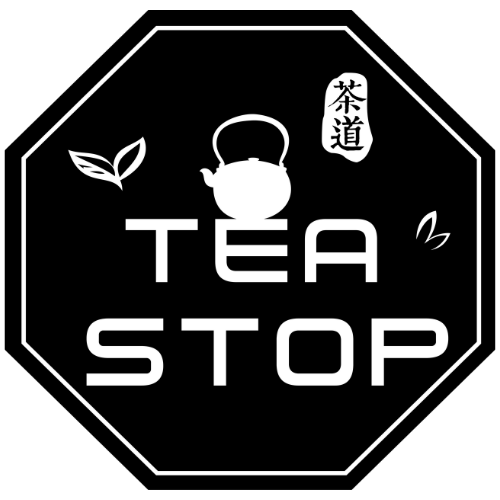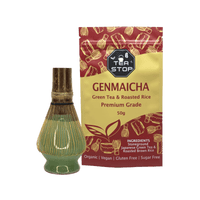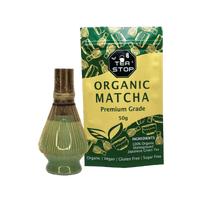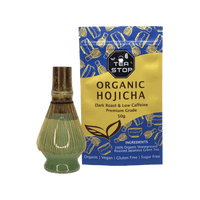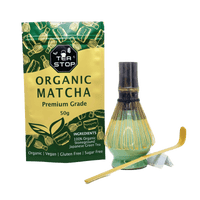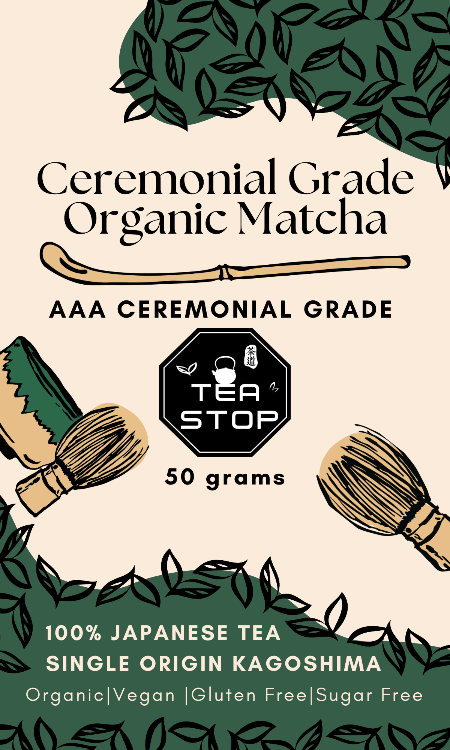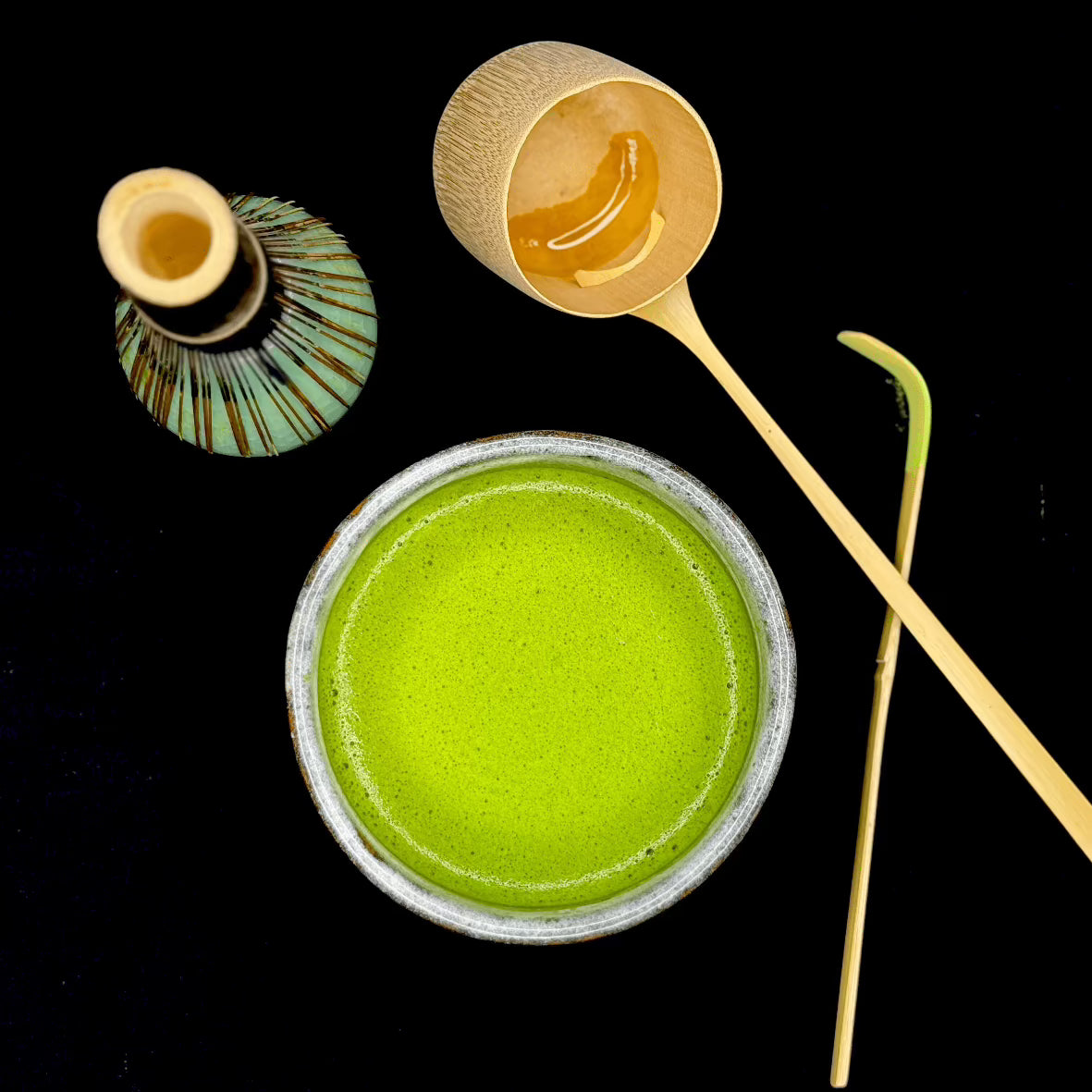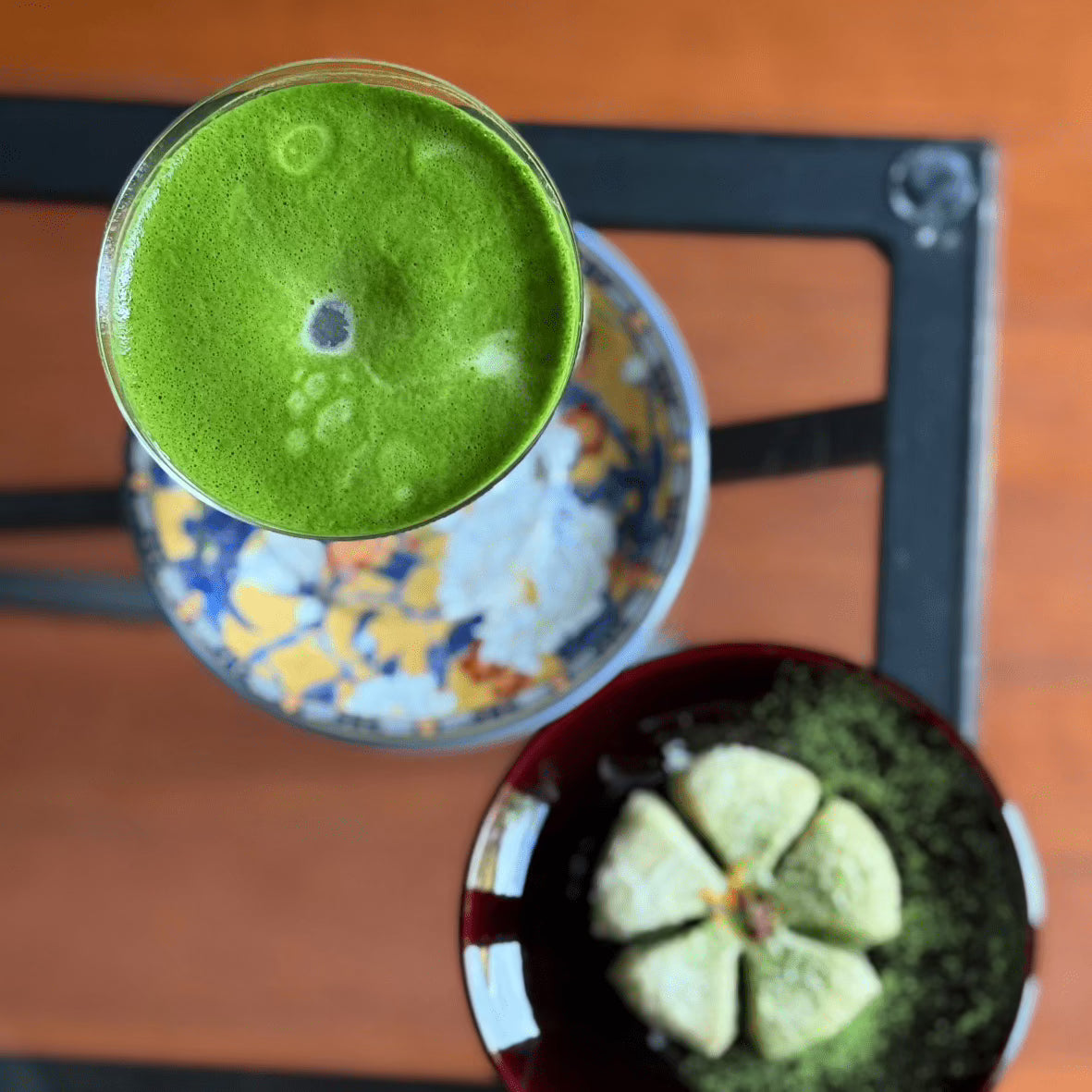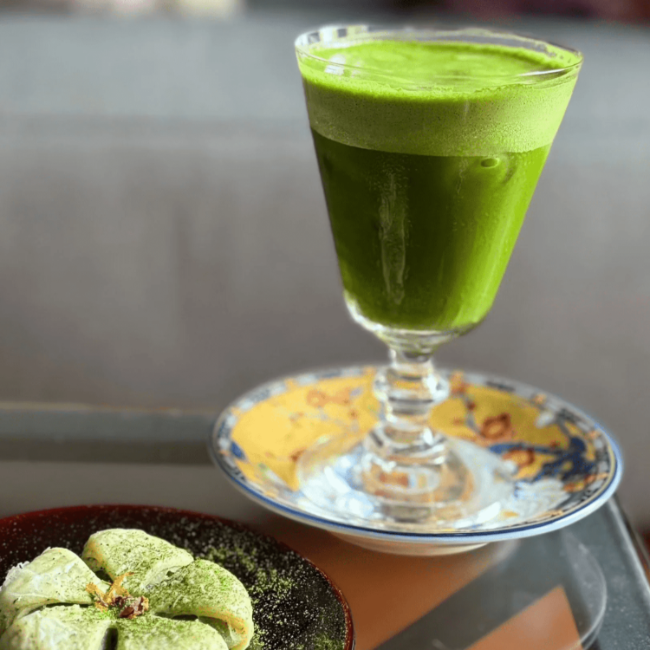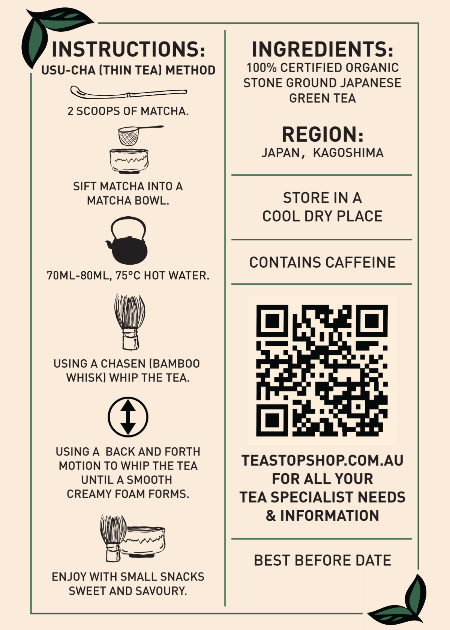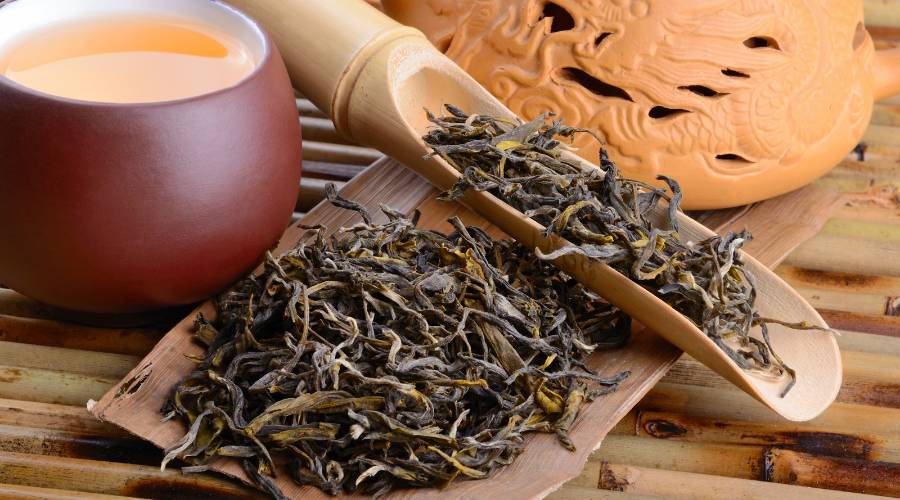
Oolong Tea: A Journey Through Flavors - Exploring Organic Iron Goddess Oolong and Chinese Tea Culture
Share
Oolong tea is a special type of tea that is loved by many people around the world. It has a unique flavor that is different from both green and black teas. Oolong tea has a long history in Chinese culture, where it is not just a drink but also a representation of tradition and craftsmanship.
One specific type of oolong tea that is highly regarded is the Iron Goddess, also known as Tieguanyin. This particular variety is famous for its distinct taste and deep cultural significance.
In this article, we will explore the fascinating world of oolong tea, with a specific focus on the Iron Goddess variety. We will discuss its complex flavors, historical importance, and brewing methods. Whether you're an experienced tea lover or someone new to tea, learning about the cultural significance and unique qualities of oolong tea will enhance your enjoyment of it.

Understanding the Flavor Profiles of Oolong Tea
Oolong tea stands out in the world of teas due to its unique characteristics, primarily shaped by its oxidation process. This process is a crucial factor that differentiates oolong from other types of tea, such as green or black. During oxidation, enzymes in the tea leaves react with oxygen, altering their chemical composition and influencing the tea's taste and aroma. The level of oxidation can vary significantly, making oolong a versatile tea with a wide range of flavor profiles.
Diverse Flavor Profiles
Oolong teas can delight your palate with flavors that range from robust and toasty to light and floral. Here are some examples:
-
Dark Oolongs: These varieties are more heavily oxidized, offering rich, roasted flavors with notes of caramel and chocolate. Da Hong Pao is a celebrated example known for its deep, complex taste.
-
Light Oolongs: With less oxidation, these teas present subtle floral and fruity notes. Taiwanese Pouchong is especially cherished for its delicate fragrance akin to gardenias or lilacs.
The diversity in flavor profiles makes oolong tea an exciting choice for those who appreciate nuanced tastes. You can explore various types of oolong tea that cater to different flavor preferences.
The Role of Brewing Techniques
To truly savor the diverse flavors that oolong teas offer, mastering proper brewing techniques is essential. Key factors include:
-
Water Temperature: Typically, oolong requires water heated between 185°F to 205°F (85°C to 96°C), depending on the level of oxidation.
-
Steeping Times: Initial steeping should last around 1-3 minutes; subsequent infusions may require slightly longer times as the leaves unfurl fully.
Each cup brewed can reveal new layers of flavor, allowing multiple infusions that enhance your tasting experience. By adjusting these variables thoughtfully, you unlock the full potential of oolong tea’s distinctive flavors.
The intricate dance between oxidation and brewing invites enthusiasts on a sensory journey, offering a deeper appreciation for this storied tea. To further enhance your oolong tea experience, consider investing in high-quality teaware or accessories that are specifically designed for optimal tea preparation and enjoyment. Additionally, exploring different tea sets can also elevate your overall experience by providing you with the right tools to brew your favorite teas perfectly.
Exploring the Iron Goddess of Mercy (Tieguanyin)
Tieguanyin, also known as the Iron Goddess of Mercy, has a rich history and is deeply respected in Chinese culture. This famous oolong tea comes from Anxi County in Fujian Province, China, and gets its name from the Buddhist figure Guanyin.
The Legend Behind Tieguanyin
There's a story that explains how Tieguanyin came to be. It goes like this:
- A poor farmer found an abandoned temple with an iron statue of Guanyin inside.
- Moved by its beauty, he decided to dedicate his life to fixing up the temple.
- As a reward for his efforts, Guanyin appeared to him in his dreams and showed him where to find a hidden treasure.
- The treasure turned out to be a single tea shoot that would bring wealth and prosperity to his village.
This legend shows just how highly regarded Tieguanyin is among oolong teas.
What Makes Tieguanyin Special?
Tieguanyin stands out from other teas because of its unique qualities:
- Floral Aroma: When you brew Tieguanyin, you'll be greeted with a delightful scent that resembles orchids.
- Creamy Mouthfeel: The tea has a smooth and velvety texture that adds to the overall drinking experience.
The leaves are carefully rolled into small pellets, which helps preserve their freshness and flavor. Depending on how it's processed, Tieguanyin can have different taste profiles ranging from sweet and floral to more robust and roasted flavors. The top-quality varieties often leave a lingering sweetness on the palate long after you've finished sipping.
How to Brew Tieguanyin
To truly enjoy the distinct flavors of Tieguanyin, it's important to brew it correctly. Here are some tips:
Water Temperature
Use water heated to about 85-90°C (185-194°F). Avoid using boiling water, as it can scorch the delicate leaves and ruin their subtle flavors.
Steeping Time
Start with an infusion time of 1-2 minutes for the first brew. For subsequent brews, gradually increase the steeping time to extract deeper flavors without making it bitter.
Multiple Infusions
High-quality Tieguanyin can be steeped multiple times—up to seven or more—each infusion revealing new layers of taste.
Recommendations for Enjoying Tieguanyin
If you want to fully appreciate all that Tieguanyin has to offer, try using traditional gongfu cha brewing methods with a small teapot or gaiwan. This technique not only brings out the complex flavors of the tea but also encourages you to savor each cup mindfully.
Drinking this revered tea is more than just enjoying its deliciousness; it's an opportunity for you to connect with centuries-old Chinese tea culture.

Health Benefits Beyond Taste: The Science Behind Oolong Tea
Oolong tea is not just a delight to the senses; it is also packed with health benefits that make it a valuable addition to your daily routine. A key component of oolong tea's health-boosting properties lies in its rich content of antioxidants. These powerful compounds are known for their potential role in reducing inflammation and promoting overall health.
Antioxidant Properties
- Combating Free Radicals: Antioxidants found in oolong tea, such as polyphenols, help to combat free radicals in the body. By neutralizing these harmful molecules, antioxidants can reduce oxidative stress, which is linked to a range of chronic diseases.
- Balanced Blend of Compounds: The unique fermentation process of oolong tea contributes to a balanced blend of catechins and flavonoids, enhancing its antioxidant capacity.
Specific Health Benefits
- Heart Health: Regular consumption of oolong tea has been associated with improved cardiovascular health. Studies suggest that the antioxidants in oolong tea may help lower cholesterol levels and improve blood circulation, reducing the risk of heart disease.
- Metabolism Boost: Oolong tea has been credited with enhancing metabolism, making it a popular choice for those looking to manage their weight. The caffeine content, combined with catechins, can increase energy expenditure and aid fat oxidation.
- Blood Sugar Regulation: Some research indicates that oolong tea may assist in regulating blood sugar levels, offering potential benefits for people with type 2 diabetes or those at risk.
The intersection of tradition and science makes oolong tea an intriguing subject for both cultural appreciation and health exploration. As you sip this aromatic brew, you're not only indulging in a sensory experience but also tapping into centuries-old wisdom backed by modern research.
The Cultural Significance of Oolong Tea in Chinese Society
Oolong tea holds a special place in Chinese culture, not just as a beverage but as an integral part of social and spiritual practices. Central to this is the tradition of tea rituals—a practice that emphasizes mindful drinking. Each sip of oolong tea is meant to be savored, encouraging a moment of reflection and appreciation for the intricate flavors.
These tea rituals are more than personal experiences; they play a significant role in social gatherings. Oolong tea often serves as a catalyst for conversation and connection, bringing people together during celebrations and family events. Whether it's a formal tea ceremony or a casual meet-up with friends, sharing a pot of oolong tea fosters bonds and creates shared memories.
In many ways, oolong tea acts as a bridge between the past and present, preserving age-old traditions while adapting to contemporary lifestyles. Its cultural significance extends beyond its flavor profile—it symbolizes hospitality, tradition, and community. Through the practice of mindful drinking and its role in social interactions, oolong tea continues to be an essential element of Chinese society.
FAQs (Frequently Asked Questions)
What is oolong tea, and why is it significant in Chinese tea culture?
Oolong tea is a traditional Chinese tea known for its unique flavor profiles and complex oxidation process. It holds significant cultural importance in China, often associated with rituals and social gatherings, making it a cherished part of Chinese tea culture.
What are the different flavor profiles of oolong tea?
Oolong tea offers a diverse range of flavors, from robust and earthy to light and floral notes. The specific flavor profile can vary greatly depending on the variety and oxidation level, with examples including the rich flavors of Tieguanyin and the lighter notes found in other oolong teas.
How does the brewing technique affect the flavor of oolong tea?
Brewing techniques play a crucial role in unlocking the full potential of oolong tea's flavors. Using the right water temperature and steeping times can enhance its taste, allowing drinkers to experience the intricate nuances that each variety has to offer.
What makes Tieguanyin (Iron Goddess) unique among oolong teas?
Tieguanyin is revered for its unique characteristics, including a distinctive floral aroma and creamy mouthfeel. Its origins are steeped in history, making it one of the most celebrated varieties of oolong tea within Chinese culture.
What health benefits are associated with drinking oolong tea?
Oolong tea is rich in antioxidants, which may help reduce inflammation and promote overall health. Regular consumption has been linked to specific benefits such as improved heart health and enhanced metabolism support.
How does oolong tea contribute to social connections in Chinese society?
Oolong tea plays a vital role in fostering social connections during gatherings and celebrations. Mindful drinking practices emphasize savoring each sip, enhancing the communal experience, and strengthening bonds among participants.
